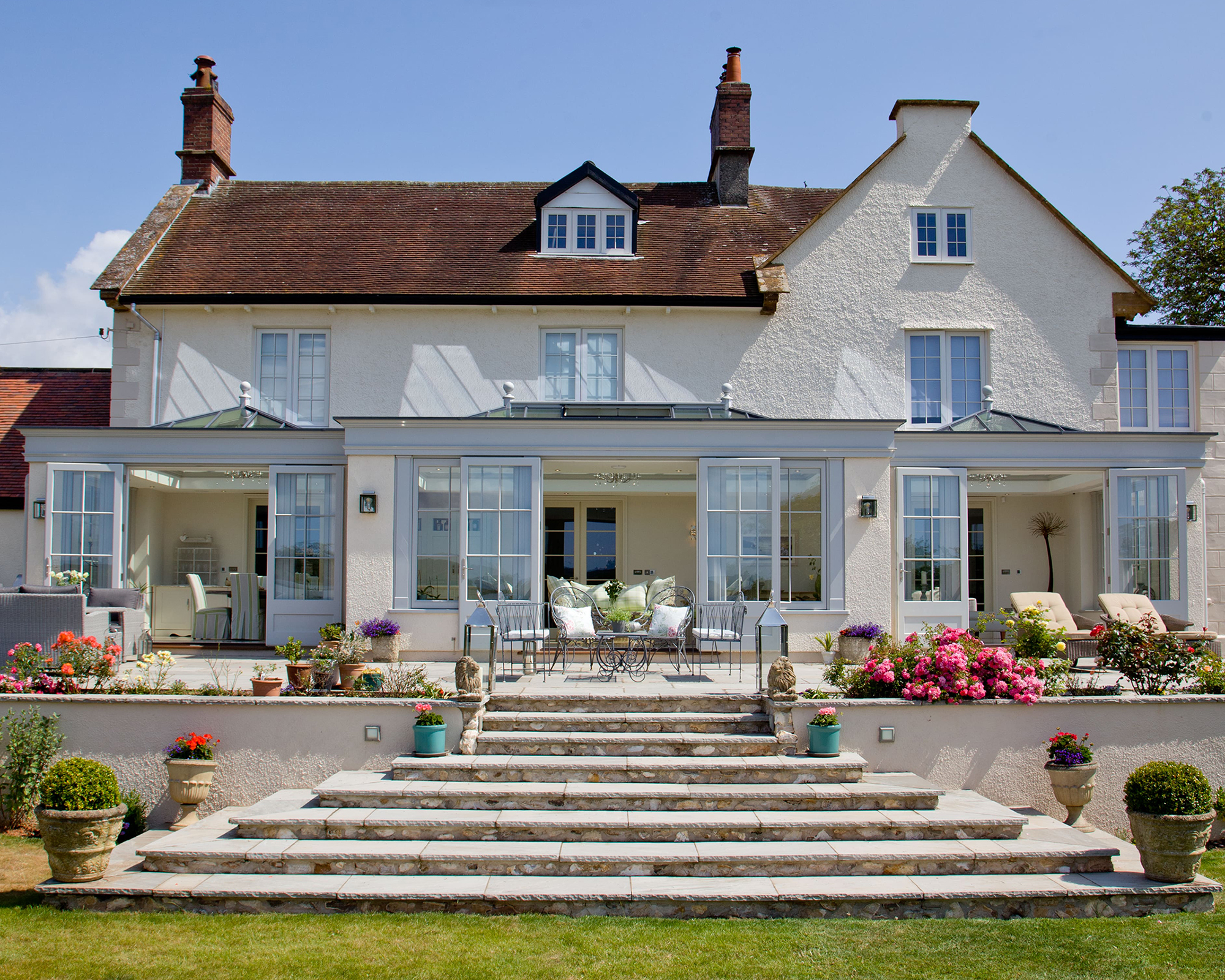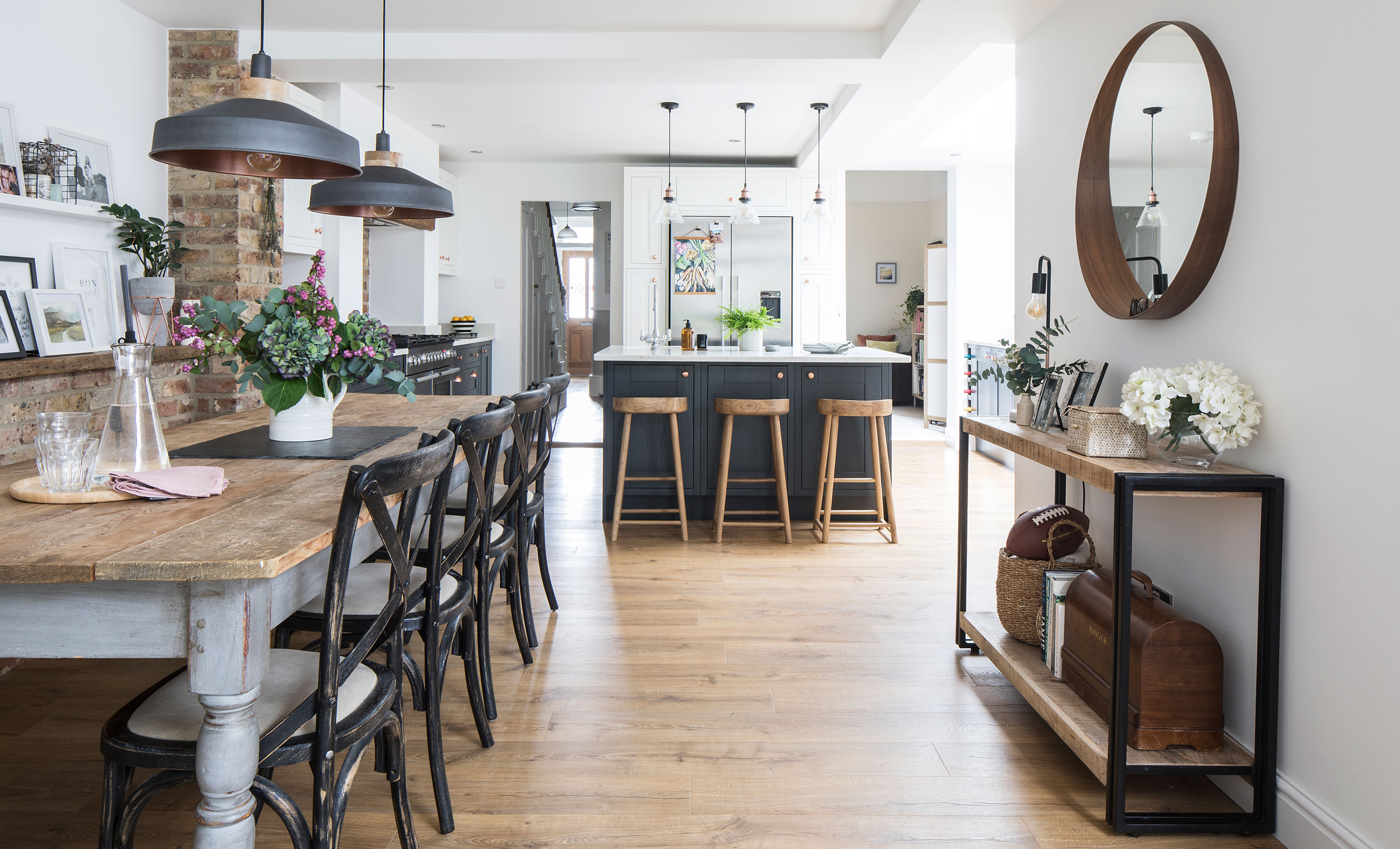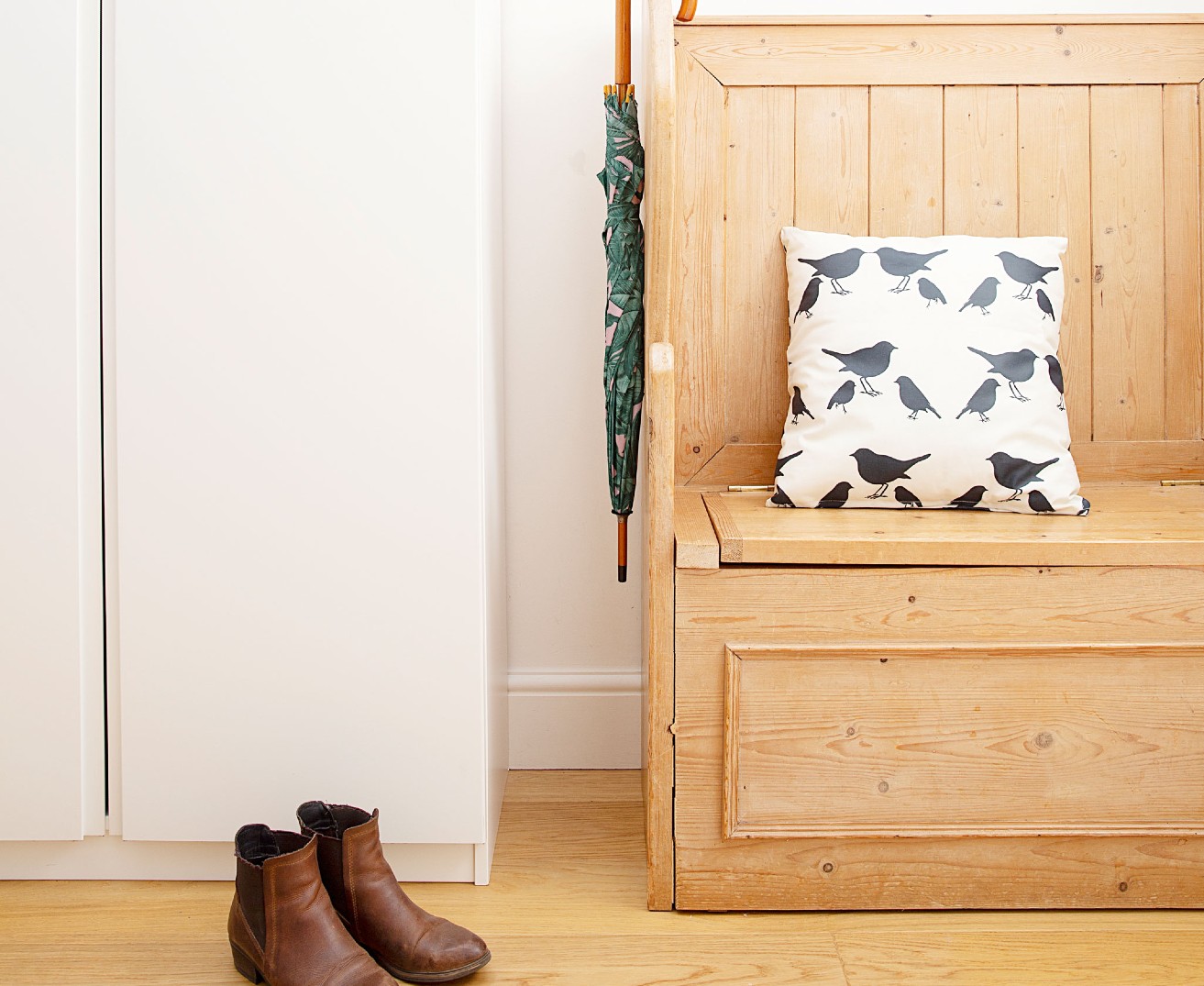

You know they’re both fabulous garden rooms, but what is the difference between conservatories and orangeries? It’s a question you’ll want to ask when you’re thinking about extending your home so you invest wisely and get additional space that meets your needs, and fits your budget.
The good news is that either could provide you with an elegant light-filled room with great garden views. But when you need to decide on conservatory vs orangery, getting savvy about their different characteristics is essential.
So, bearing in mind that clever conservatory ideas or a great orangery can both get you the extra square footage your home is lacking, here’s the inside track for everyone who’s ever asked what’s the difference.
What’s the difference between conservatories and orangeries?
The difference between orangery designs and conservatories is actually all in the roof and the sides of the structure. Note that the interior will have a different atmosphere as well.
Conservatory vs orangery glazing
Let’s start with the greatest difference between conservatories and orangeries. This is found in the amount of glazing the room incorporates, starting from the roof.
When it comes to conservatories vs orangeries, the former definitely trumps the latter when it comes to how much glazing is in the roof. In fact, a conservatory is likely to have a roof that’s more than 75 per cent glazed. An orangery roof, on the other hand, is generally less than 75 per cent glazed. Note, also, that an orangery could have a solid roof.
The sides of a conservatory also have a larger amount of glazing than those of an orangery.
Conservatory and orangery structure
The proportion of glazing is not the only structural difference in the conservatory vs orangery stakes.
The roof of a classic orangery is inset, and it has a shallower pitch as well. Why? It reflects the building’s historical origins.
When it comes to the sides of the building, an orangery will have sizeable rectangular columns – strictly speaking, pilasters – and an entablature or upper part above them. Altogether, it’s an addition to your home that’s going to look more substantial and, built using brick or stone and perhaps with a rendered finish, an orangery’s structure can be truly sympathetic to your home’s architecture.
In fact, a bespoke orangery could be an even more solid structure that’s more akin to a single storey extension and which features large windows and sets of doors plus a glazed roof but retains the traditional appearance of an orangery.
A conservatory, however, makes for a ‘finer’ impression because it is a relatively more delicate structure than an orangery, especially if it’s built with aluminium framing. Of course, wood is also an option for a conservatory build, as is uPVC, although that will make for a bulkier frame.
The interiors of conservatories and orangeries
It’s important when you’re choosing between a conservatory and an orangery that you consider how it's not just about how either will look from the outside. The differences on the outside of the two structures also make a difference to their interiors also.
More windows on the sides and a more highly glazed roof make a conservatory interior more intimately linked with the garden, and also mean more daylight will reach the room.
Overall, it can be seen as more of a garden room, with its large amounts of glass, and it is often separated from the rest of the house by external-grade doors – although contemporary constructions are thermally efficient enough to be open to the rest of the house, just as glazed extensions would be.
The structure of the roof of an orangery means there will usually be an inset ceiling around the room – useful for lighting – and it will feel more extension-like and solid than a conservatory.
It will also appear more like a natural continuation of the architecture of the original house as brick walls will let you consider different colours and finishes.
Is an orangery better than a conservatory?
Does the difference between conservatories and orangeries make an orangery a better option than a conservatory? It is true to say that orangeries are far more versatile in style than conservatories yet they don’t usually cost as much to construct as a single-storey extension (depending on the design), which can make them an excellent choice.
Another plus point of an orangery is that you can opt for a kitchen orangery, creating a space for cooking and dining with wonderful garden views. A design with sections of solid wall provides the necessary space for kitchen cabinetry.
Is an orangery cheaper than a conservatory?
When it comes to the cost difference for both, generally speaking, an orangery is not cheaper than a conservatory.
It is possible to find the two structures at prices starting from around £10,000, but this would likely be for more basic orangery materials and usually you would expect to pay from £35,000 for a good quality design.
Be aware, too, that an orangery with a kitchen, and other factors like size and materials, will increase the cost.
Join our newsletter
Get small space home decor ideas, celeb inspiration, DIY tips and more, straight to your inbox!

Sarah is a freelance journalist and editor writing for websites, national newspapers, and magazines. She’s spent most of her journalistic career specialising in homes – long enough to see fridges become smart, decorating fashions embrace both minimalism and maximalism, and interiors that blur the indoor/outdoor link become a must-have. She loves testing the latest home appliances, revealing the trends in furnishings and fittings for every room, and investigating the benefits, costs and practicalities of home improvement. It's no big surprise that she likes to put what she writes about into practice, and is a serial house revamper. For Realhomes.com, Sarah reviews coffee machines and vacuum cleaners, taking them through their paces at home to give us an honest, real life review and comparison of every model.
-
 Sunroom costs – the average price to add a sunroom to your home in 2022
Sunroom costs – the average price to add a sunroom to your home in 2022Is their price per square-footage worth it? And, do average sunroom costs work out cheaper than a home addition?
By Carol J. Alexander Last updated
-
 Real home: An impressive extension opens up this Victorian home
Real home: An impressive extension opens up this Victorian homeArtist Kitty McCurdy and husband Kieran have created a dream home from a dated period property
By Marisha Taylor Published
-
 Bump-out additions: How to get more room without the expense of a full addition
Bump-out additions: How to get more room without the expense of a full additionIf you're thinking about a small home addition or extending a room by just a few feet, a bump out addition can be a great alternative to a full add on, and save you thousands in the process.
By Carol J. Alexander Published
-
 Thinking about extending? Here's how to add space without adding on...
Thinking about extending? Here's how to add space without adding on...Things feeling a little cramped? Here's how to carve out more room in your home, without taking on a costly extension
By Laura Jane Clark Published